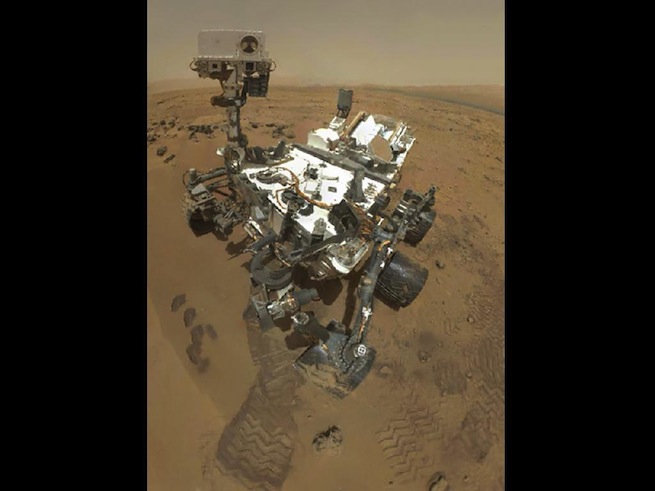The Jet Propulsion Laboratory prepared for a lot of variables when it sent Curiosity, the car sized rover, to Mars, but it didn’t prepare for it to become a tween-aged girl on Myspace.
[aditude-amp id="flyingcarpet" targeting='{"env":"staging","page_type":"article","post_id":568397,"post_type":"story","post_chan":"none","tags":null,"ai":false,"category":"none","all_categories":"offbeat,","session":"D"}']Just kidding. The Mars Curiosity rover took a “selfie,” or a picture you take of yourself from a flattering angle. Curiosity was actually taking its own portrait for researchers down on Earth to use as an example of how the rover looked at the beginning of its mission. It will periodically send these images, which researchers at JPL will use to see if Curiosity’s wheels are clogged with dirt, or if it has any other kind of damage.
Right now the rover seems to be in pretty good shape, though these images are only thumbnails stitched together to give us the full view of Curiosity. It will later send a high-definition version of the selfie that the researchers can use for examination.
AI Weekly
The must-read newsletter for AI and Big Data industry written by Khari Johnson, Kyle Wiggers, and Seth Colaner.
Included with VentureBeat Insider and VentureBeat VIP memberships.
Curiosity previously took high-def images of a shiny material found in the martian soil. This particular shiny piece was actually just plastic, but Curiosity’s cameras later helped researchers determine that there were separate, native shiny-particles in the regolith, or Mars dirt. Curiosity took up a few more scoops to do some research and found that Mars’ soil is similar to the volcanic soil in Hawaii.
You can see the scoop marks on the left side of the image.
hat tip Gizmodo; Curiosity image via JPL
VentureBeat's mission is to be a digital town square for technical decision-makers to gain knowledge about transformative enterprise technology and transact. Learn More

